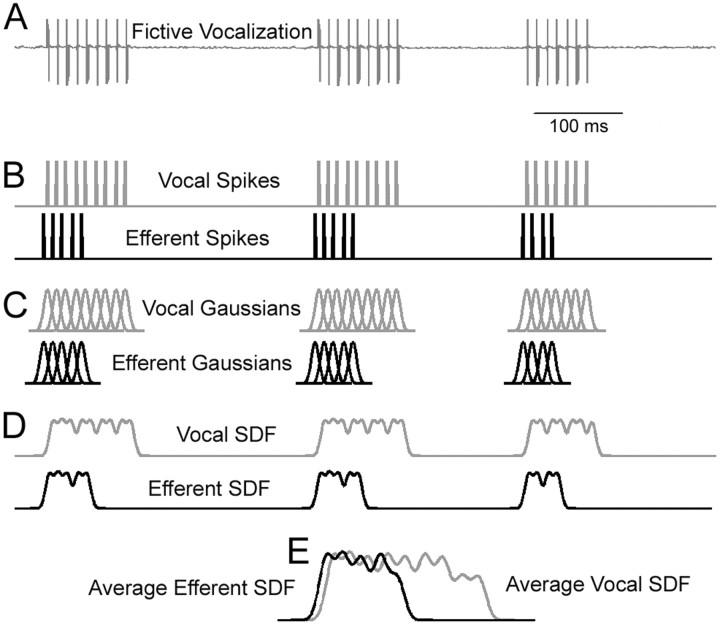Figure 1.
Schematic overview of methods used to construct SDFs. Data shown are representative of responses. With the exception of the fictive vocalizations shown in A, the data are computer synthesized for simplicity of presentation. A, Synchronized output of the ventral occipital nerve root after glutamate injections into a vocal site in the midbrain. The temporal properties of the sonic motor volley (the fictive vocalization) that is predictive of the basic features of natural vocalizations matches the synchronized, oscillatory-like activity of an expansive pacemaker-motor neuron circuit that extends throughout the caudal hindbrain and rostral spinal cord (Bass and Baker, 1990). B, Data acquisition software captured spike times of compound vocal potentials (gray, top traces) and efferent action potentials (black, bottom traces). C, These were then convolved with a Gaussian window function, which gave a smooth estimate of spike rate. D, Combining the individual Gaussians allowed us to automatically detect the onset of fictive vocalizations. E, Aligning all individual fictive vocalizations on their onset and averaging both the vocal and associated efferent activity produced SDFs that represented the average change in efferent activity during fictive vocalizations. The actual data permitted finer temporal resolution than the Gaussian simulation shown here. For details, see Materials and Methods.

